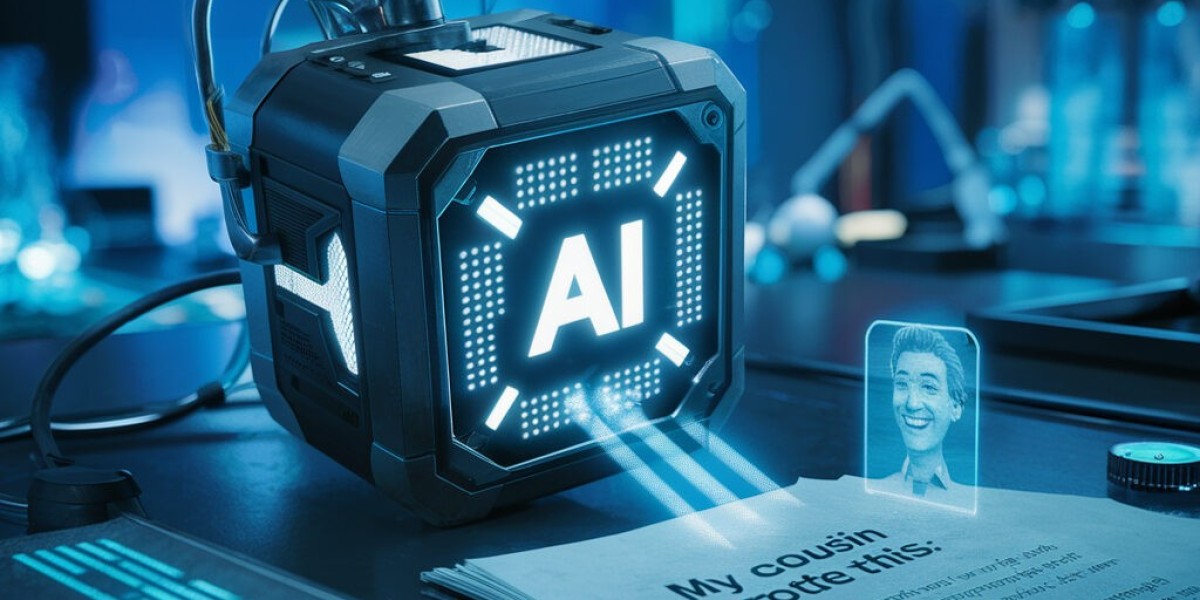Introduction
In the last decade, Artificial Intelligence (AI) has become a central part of modern life, influencing industries such as education, digital marketing, software development, and journalism. While AI-driven tools such as ChatGPT, Jasper, and other generative systems create powerful content, they have also raised concerns about originality, authenticity, and transparency. To address this, specialized tools known as “Detector de IA” and “Détecteur IA” have been developed. These terms both translate to “AI detector” in English and refer to software systems designed to identify whether a piece of text, image, or even audio has been generated by artificial intelligence.
What is a Detector de IA / Détecteur IA?
A detector de IA or détecteur IA is a digital tool or algorithm that examines a given piece of content and determines if it was created by a human or an AI model. These detectors are not limited to text; some advanced systems can analyze images, videos, and voice recordings to spot AI involvement.
Detector de IA – A Spanish term commonly used in Latin American and Spanish-speaking regions.
Détecteur IA – A French equivalent, widely used in France, Canada, and French-speaking communities.
Despite the language difference, both terms describe the same category of tools designed to bring transparency to the rapidly growing use of AI content.
How Do AI Detectors Work?
AI detectors rely on several techniques to identify machine-generated content. Although the exact methods vary by tool, most use combinations of the following approaches:
1. Linguistic Analysis
AI-generated text often has patterns that differ from human writing. For example, it may be too predictable, repetitive, or overly structured. AI detectors look for these signs by analyzing sentence flow, vocabulary variety, and complexity.
2. Statistical Fingerprinting
Detectors apply statistical models to check whether the probability of certain word sequences is more typical of an AI model than a human writer.
3. Metadata Examination
Some detectors analyze metadata in files, especially for images or videos, to trace signs of AI generation. For instance, AI-generated images may lack natural camera signatures.
4. Machine Learning Models
Modern AI detectors are trained on massive datasets of both human-written and AI-generated content. By comparing input text to these datasets, they predict the likelihood that AI was involved.
Importance of Detector de IA and Détecteur IA
The rise of AI tools has created opportunities, but also challenges. Here are some reasons why AI detectors are essential:
1. Educational Integrity
With students increasingly using AI tools to write essays or research papers, schools and universities rely on detector de IA / détecteur IA to ensure academic honesty.
2. Content Authenticity
Journalists, marketers, and bloggers must maintain credibility. AI detectors help editors confirm whether submitted work is genuinely human-written.
3. Legal and Ethical Issues
In fields such as law, healthcare, or science, misinformation created by AI could have serious consequences. Detectors help maintain accountability.
4. Combating Misinformation
Fake news, deepfakes, and AI-driven propaganda can spread rapidly online. AI detection tools act as the first line of defense.
Popular Detector de IA and Détecteur IA Tools
Several well-known platforms provide AI detection services, many available globally. Some examples include:
GPTZero – A widely recognized AI detector, often used by educators.
Originality.ai – A tool designed for content creators and publishers.
Copyleaks AI Detector – Supports multiple languages, making it useful for both detector de IA and détecteur IA needs.
Writer AI Detector – A free and fast option for identifying AI-written text.
These platforms are continuously evolving to keep pace with the rapid improvements in AI content generation.
Applications in Different Sectors
1. Education
Professors and teachers use AI detectors to identify whether homework, research papers, or assignments are written by students or machines.
2. Publishing and Journalism
Media companies and online publishers rely on these tools to confirm the originality of articles, blogs, and news reports.
3. Corporate Environments
Businesses use AI detectors to verify the authenticity of reports, proposals, and customer communications.
4. Law and Government
Authorities may use AI detection to examine fraudulent claims, verify digital evidence, or analyze suspicious documents.
5. Creative Industries
In art, design, and film, AI detectors help distinguish between human-made and AI-generated works, ensuring originality in competitions and copyright claims.
Advantages of Using AI Detectors
Maintains Trust – Ensures readers and audiences consume authentic human-generated content.
Prevents Plagiarism – Helps educators and businesses detect when AI has been misused.
Supports Regulations – Encourages ethical AI usage by aligning with legal standards.
Improves Content Quality – By filtering out AI-generated spam or low-quality material.
Limitations of AI Detectors
While useful, detector de IA / détecteur IA systems are not perfect.
False Positives – Sometimes, human-written text is flagged as AI-generated.
False Negatives – Advanced AI models may escape detection.
Language Barriers – Some detectors work better in English than in Spanish or French, limiting their global accuracy.
Constant Evolution – As AI improves, detectors must update frequently to remain effective.
The Future of Detector de IA and Détecteur IA
Looking ahead, AI detection tools are likely to become more advanced, multilingual, and integrated into everyday systems. Future detectors may combine text, voice, and image analysis in one platform. Moreover, they may include blockchain-based verification systems to track the origin of content.
Governments and organizations are also expected to push for AI transparency laws, where detectors will play a critical role in auditing AI-generated materials.
Best Practices for Using AI Detectors
Use Multiple Tools – Relying on more than one detector increases accuracy.
Combine Human Judgment – Always pair detection results with human review.
Stay Updated – Use the latest versions of AI detectors since AI technology evolves rapidly.
Educate Users – Encourage students, employees, and creators to understand the ethical use of AI.
Conclusion
The rise of AI brings both opportunities and challenges. While AI-generated content can save time and increase productivity, it also risks eroding trust, authenticity, and originality. Tools like detector de IA in Spanish and détecteur IA in French play a crucial role in maintaining fairness, credibility, and transparency across education, publishing, business, and law.








